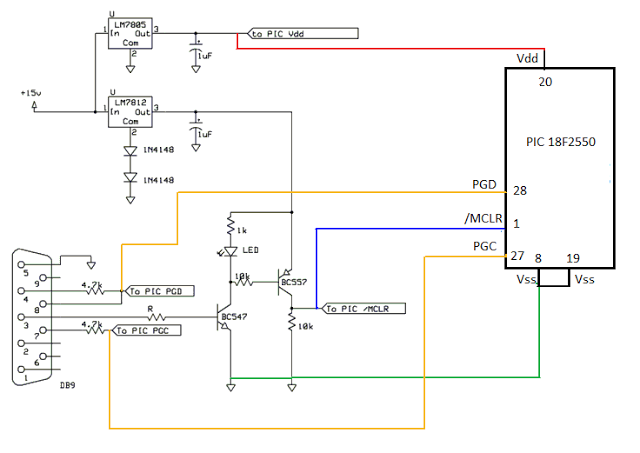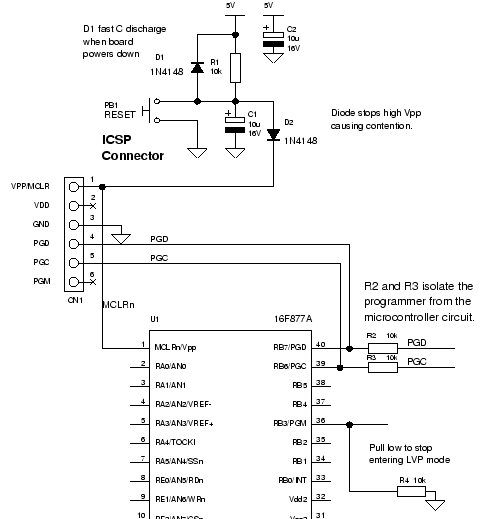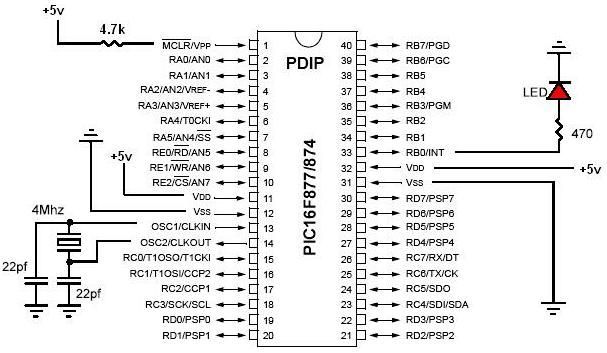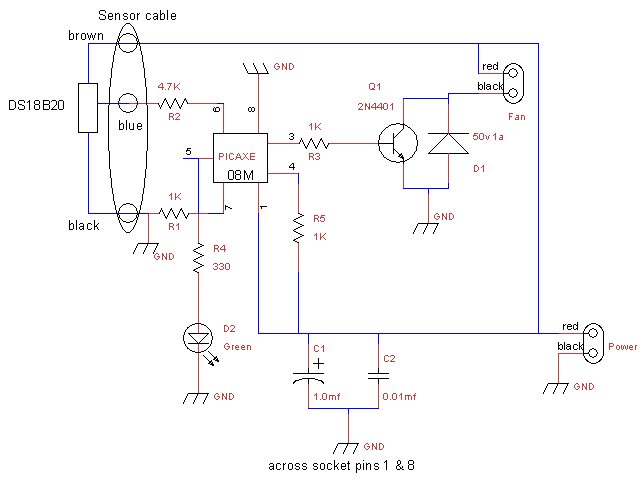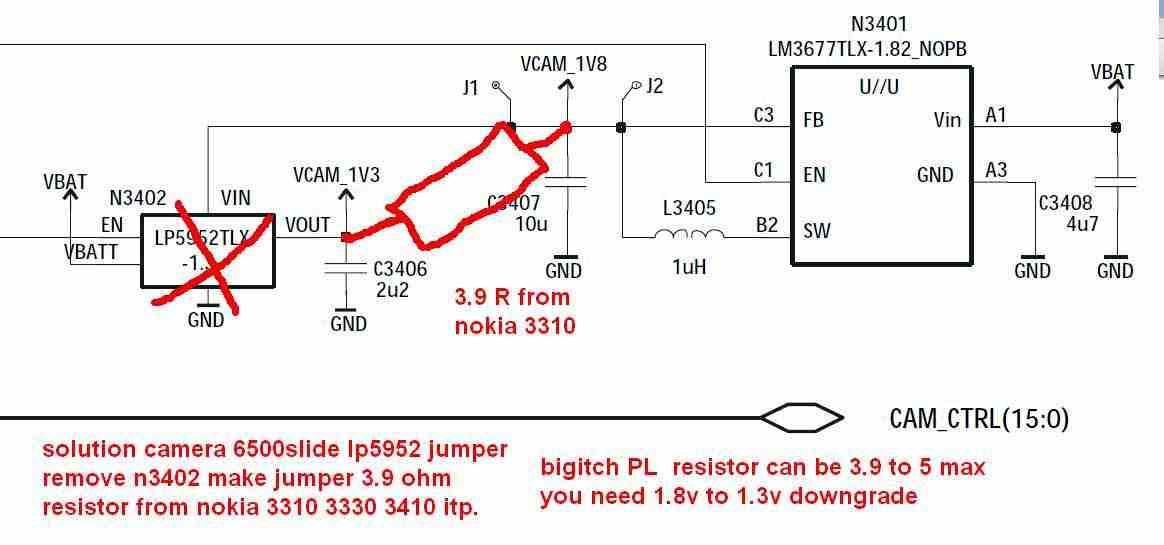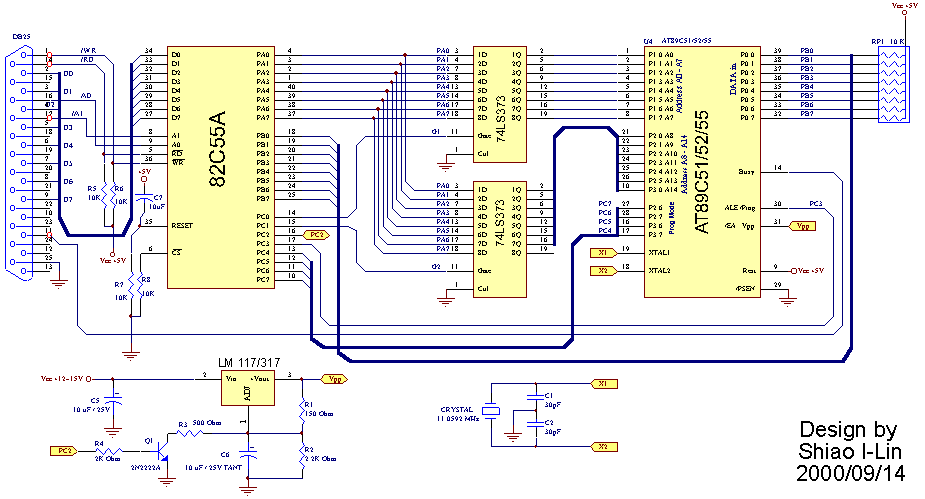
PIC Programmer
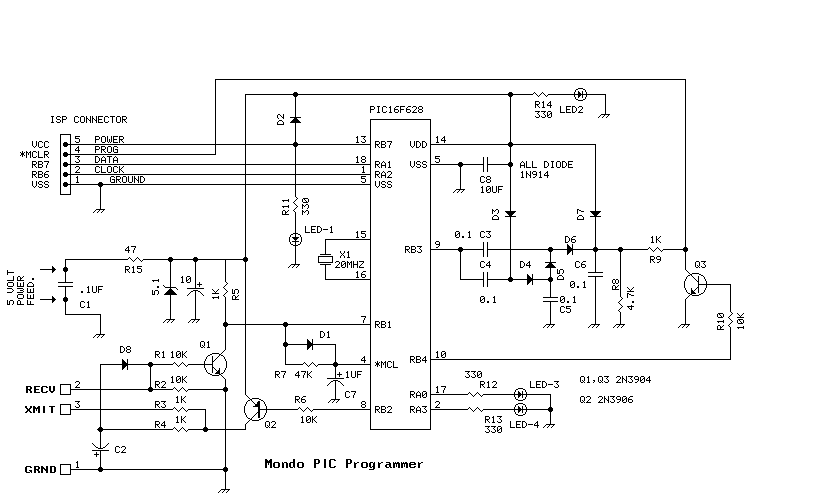
This programmer requires only a basic terminal program capable of uploading an ASCII PIC HEX file. It does not matter what operating system or computer (MAC, Win98, XP, Vista, DOS, Linux, etc.) is used to talk to it. All of the software necessary for programming is in the unit's own PIC (16F628), which incorporates a set of programming algorithms for several PIC versions along with some I2C EEPROMs. This unit is designed to do In Circuit Serial Programming (ISP). It can either source power or borrow power from the target device. In either case, it generates its own 12-volt programming voltage from the 5-volt source. Here are the commands that are presently available. They will be discussed below. Some commands used in developing it have been left in for experimental purposes.
An Select programming algorithm 'n'
L Begin program load of HEX file.
Unn Unload 'nn' bytes from PIC in standard HEX format.
D Hex data dump until any key hit. Abort on ESC.
P Manual enable program power
R Manual Run program
S Manual Stop program
/ End of line delay in milliseconds
- Delay between characters sent in milliseconds
F Fast mode - no extra delay powering up target.
Q Core dump of PIC internal RAM (used to debug programmer itself)
? Show version and current algorithm (show SignOn message)
.nn Send hex value as PIC (6-bit) command byte (used for debug)
,nnnn Send hex value as 2 PIC (8-bit) data bytes. (used for debug)
;nn Wait nn milliseconds (used for debug)
= Read PIC hex program data (used for debug)
[ Create I2C Start condition
] Create I2C Stop condition
Connection to the computer serial port is made via RJ11 (phone) connector and a DB-9 to RJ11 adapter. Unlike a lot of 'serial' programmers, this design actually uses serial data to communicate to the PC. This makes it usable even at very long distances. Connection to the target device is via a 5-pin connector (lower left corner) and an assortment of adapters.
The described programmer is a compact and versatile device designed for programming PIC microcontrollers using a straightforward ASCII terminal interface. It operates independently of the host computer's operating system, providing extensive compatibility with various systems, including MAC, Windows, DOS, and Linux. The core of the programmer is based on the PIC16F628 microcontroller, which incorporates essential programming algorithms suitable for a range of PIC microcontrollers, as well as support for I2C EEPROM devices.
In terms of functionality, the programmer supports In-Circuit Serial Programming (ISP), allowing it to program the target device while it is in the circuit. This feature is particularly beneficial for development and debugging processes. The device can source its own power or draw power from the target device, with an internal mechanism to generate a 12-volt programming voltage from a 5-volt supply. This capability ensures that the programmer can effectively interface with various PIC microcontrollers that may require different voltage levels for programming.
The command set provided allows for a range of operations, including selecting programming algorithms, loading HEX files, and performing data dumps. Specific commands facilitate debugging and development, such as core dumps of the PIC's internal RAM and the ability to send and receive hex values directly to and from the PIC. The programmer's design emphasizes efficiency, with options for fast operation and minimal delays, making it suitable for high-speed programming tasks.
Connectivity is achieved through a standard RJ11 connector, which interfaces with a DB-9 adapter for serial communication with the computer. This design choice not only simplifies the connection process but also enhances the reliability of data transmission over longer distances compared to traditional serial communication methods. The 5-pin connector on the device allows for flexible connections to various target devices, accommodating different programming needs and configurations. Overall, this programmer is a robust tool for developers working with PIC microcontrollers, providing essential features for effective programming and debugging.This programmer requires only a basic terminal program capable of uploading an ascii PIC HEX file. It does not matter what operating system or computer (MAC, Win98, XP, Vista, DOS, Linux, etc.) is used to talk to it. All of the software necessary for programming is in the unit's own PIC (16F628) which incorporates a set of programming algorithms for several PIC versions along with some I2C eeproms.
This unit is designed to do In Circuit Serial Programming (ISP). It can either source power or borrow power from the target device. In either case, it generates its own 12 volt programming voltage from the 5 volt source. Here are the commands that are presently available. They will be discussed below. Some commands used in developing it have been left in for experimental purposes. An Select programming algorithm 'n' L Begin program load of HEX file. Unn Unload 'nn' bytes from PIC in standard HEX format. D Hex data dump until any key hit. Abort on ESC. P Manual enable program power R Manual Run program S Manual Stop program / End of line delay in millisconds - Delay between characters sent in milliseconds F Fast mode - no extra delay powering up target. Q Core dump of PIC internal RAM (used to debug programmer itself) ? Show version and current algorithm (show SignOn message) .nn Send hex value as PIC (6-bit) command byte (used for debug) ,nnnn Send hex value as 2 PIC (8-bit) data bytes.
(used for debug) ;nn Wait nn milliseconds (used for debug) = Read PIC hex program data (used for debug) [ Create I2C Start condition ] Create I2C Stop condition Connection to the computer serial port is made via RJ11 (phone) connector and a DB-9 to RJ11 adapter. Unlike a lot of 'serial' programmers, this design actually uses serial data to communicate to the PC.
This makes it usable even at very long distances. Connection to the target device is via a 5-pin connector (lower left corner) and an assortment of adapters. 🔗 External reference
An Select programming algorithm 'n'
L Begin program load of HEX file.
Unn Unload 'nn' bytes from PIC in standard HEX format.
D Hex data dump until any key hit. Abort on ESC.
P Manual enable program power
R Manual Run program
S Manual Stop program
/ End of line delay in milliseconds
- Delay between characters sent in milliseconds
F Fast mode - no extra delay powering up target.
Q Core dump of PIC internal RAM (used to debug programmer itself)
? Show version and current algorithm (show SignOn message)
.nn Send hex value as PIC (6-bit) command byte (used for debug)
,nnnn Send hex value as 2 PIC (8-bit) data bytes. (used for debug)
;nn Wait nn milliseconds (used for debug)
= Read PIC hex program data (used for debug)
[ Create I2C Start condition
] Create I2C Stop condition
Connection to the computer serial port is made via RJ11 (phone) connector and a DB-9 to RJ11 adapter. Unlike a lot of 'serial' programmers, this design actually uses serial data to communicate to the PC. This makes it usable even at very long distances. Connection to the target device is via a 5-pin connector (lower left corner) and an assortment of adapters.
The described programmer is a compact and versatile device designed for programming PIC microcontrollers using a straightforward ASCII terminal interface. It operates independently of the host computer's operating system, providing extensive compatibility with various systems, including MAC, Windows, DOS, and Linux. The core of the programmer is based on the PIC16F628 microcontroller, which incorporates essential programming algorithms suitable for a range of PIC microcontrollers, as well as support for I2C EEPROM devices.
In terms of functionality, the programmer supports In-Circuit Serial Programming (ISP), allowing it to program the target device while it is in the circuit. This feature is particularly beneficial for development and debugging processes. The device can source its own power or draw power from the target device, with an internal mechanism to generate a 12-volt programming voltage from a 5-volt supply. This capability ensures that the programmer can effectively interface with various PIC microcontrollers that may require different voltage levels for programming.
The command set provided allows for a range of operations, including selecting programming algorithms, loading HEX files, and performing data dumps. Specific commands facilitate debugging and development, such as core dumps of the PIC's internal RAM and the ability to send and receive hex values directly to and from the PIC. The programmer's design emphasizes efficiency, with options for fast operation and minimal delays, making it suitable for high-speed programming tasks.
Connectivity is achieved through a standard RJ11 connector, which interfaces with a DB-9 adapter for serial communication with the computer. This design choice not only simplifies the connection process but also enhances the reliability of data transmission over longer distances compared to traditional serial communication methods. The 5-pin connector on the device allows for flexible connections to various target devices, accommodating different programming needs and configurations. Overall, this programmer is a robust tool for developers working with PIC microcontrollers, providing essential features for effective programming and debugging.This programmer requires only a basic terminal program capable of uploading an ascii PIC HEX file. It does not matter what operating system or computer (MAC, Win98, XP, Vista, DOS, Linux, etc.) is used to talk to it. All of the software necessary for programming is in the unit's own PIC (16F628) which incorporates a set of programming algorithms for several PIC versions along with some I2C eeproms.
This unit is designed to do In Circuit Serial Programming (ISP). It can either source power or borrow power from the target device. In either case, it generates its own 12 volt programming voltage from the 5 volt source. Here are the commands that are presently available. They will be discussed below. Some commands used in developing it have been left in for experimental purposes. An Select programming algorithm 'n' L Begin program load of HEX file. Unn Unload 'nn' bytes from PIC in standard HEX format. D Hex data dump until any key hit. Abort on ESC. P Manual enable program power R Manual Run program S Manual Stop program / End of line delay in millisconds - Delay between characters sent in milliseconds F Fast mode - no extra delay powering up target. Q Core dump of PIC internal RAM (used to debug programmer itself) ? Show version and current algorithm (show SignOn message) .nn Send hex value as PIC (6-bit) command byte (used for debug) ,nnnn Send hex value as 2 PIC (8-bit) data bytes.
(used for debug) ;nn Wait nn milliseconds (used for debug) = Read PIC hex program data (used for debug) [ Create I2C Start condition ] Create I2C Stop condition Connection to the computer serial port is made via RJ11 (phone) connector and a DB-9 to RJ11 adapter. Unlike a lot of 'serial' programmers, this design actually uses serial data to communicate to the PC.
This makes it usable even at very long distances. Connection to the target device is via a 5-pin connector (lower left corner) and an assortment of adapters. 🔗 External reference
